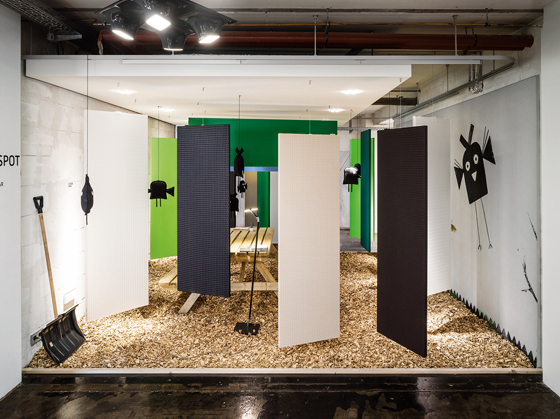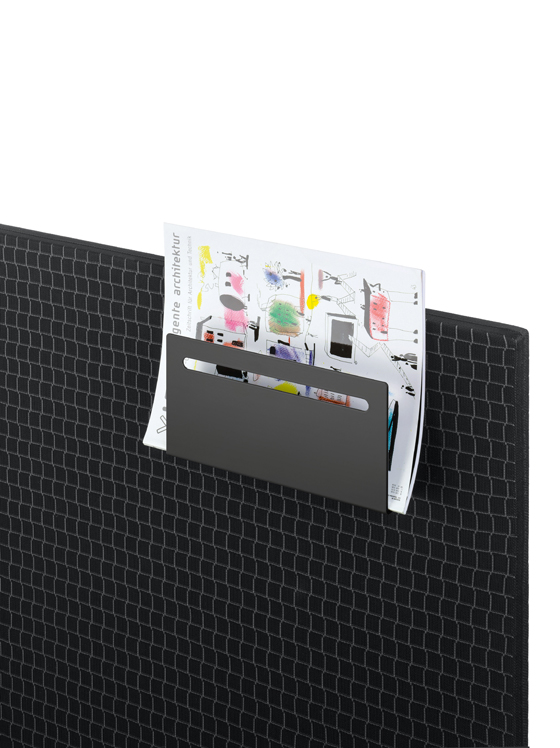Nimbus and Rosso: Two Brands, One Vision
Texto por Gerrit Terstiege
Alemania
06.12.14
Lighting and acoustics are without doubt two of the essential factors in determining the comfort of an office as a workspace. In a career spanning more than 25 years so far, Dietrich F. Brennenstuhl has acquired great expertise in both of these fields. With his Nimbus brand, the Stuttgart architect and entrepreneur pioneered LED lighting solutions well before technological developments had fully opened up this area, when there was still a lot of basic work to be done.
Rossoacoustic TP30 KNIT: A special knitting procedure allows even customised version with a personal touch. Foto: Frank Ockert
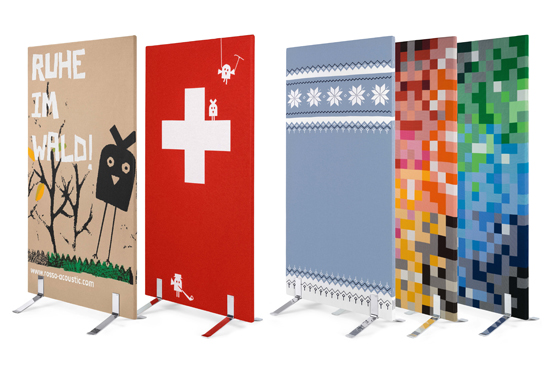
Rossoacoustic TP30 KNIT: A special knitting procedure allows even customised version with a personal touch. Foto: Frank Ockert
×Brennenstuhl: ‘We began our research into LEDs before the turn of the millennium. We had product samples sent to us and ran our own tests. It wasn’t until around 2004 that we felt we had the results we needed in order to move on to concrete product planning. By that time, I had already gained 20 years of experience working with the subject of light. While I was still an architecture student, I designed and self-produced a halogen lighting system for a Stuttgart gallery. This success ultimately led to my founding Nimbus. That’s how it all began.’
Dietrich F. Brennenstuhl, architect, founder, proprietor and Managing Director of the Nimbus Group; photo: Frank Ockert/Nimbus Group
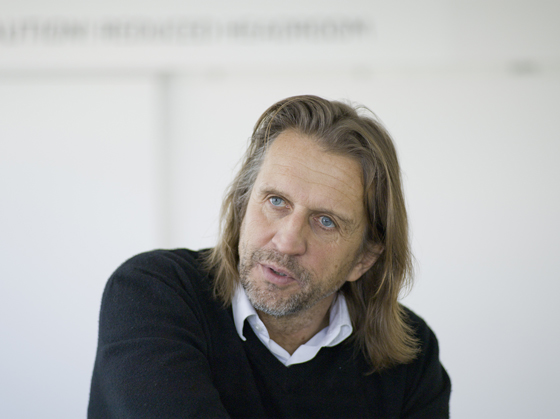
Dietrich F. Brennenstuhl, architect, founder, proprietor and Managing Director of the Nimbus Group; photo: Frank Ockert/Nimbus Group
×Brennenstuhl’s second brand, Rosso, produces modular and acoustically active office partition systems that are easily configured, expanded and quickly adapted to changing spatial needs. The two brands share a clear design vocabulary that reflects Brennenstuhl’s training as an architect and a toolmaker. Oriented to modern office design, this language of form can be coherently integrated into today’s office interiors. Rossoacoustic panels are unobtrusive, transparent plastic units with a honeycomb structure of tiny holes for significant sound absorption. Distinctive cover materials are available for the partition modules, with graphic motifs and patterns that introduce colour and warmth to the office environment. Because lighting and acoustics are phenomena best experienced in an actual spatial context, Brennenstuhl established an expansive showroom in the north of Stuttgart, where his company is based. Called Mock-Up, this presentation space diverges markedly from the slick aesthetic of customary showrooms.
Mock-Up, the Nimbus showroom in north Stuttgart; photo: Frank Ockert
A Mock-Up highlight was the talk by architect Diébédo Francis Kéré in June 2014, who spoke about his design philosophy and his environmentally sustainable architectural projects; photo: René Müller
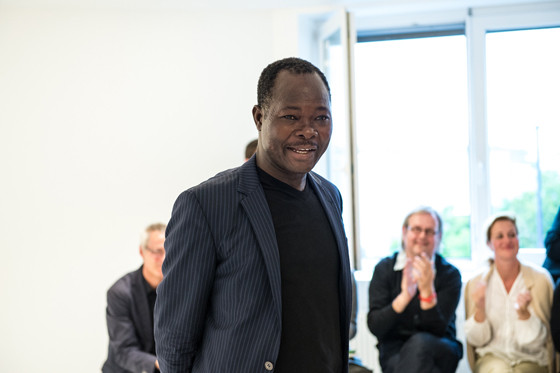
A Mock-Up highlight was the talk by architect Diébédo Francis Kéré in June 2014, who spoke about his design philosophy and his environmentally sustainable architectural projects; photo: René Müller
×Its heavily marked concrete floor and the graffiti on the walls recall the period of 1991 to 2001, when the loft storey was used as a hostel for arriving immigrants. This patina was not erased, but instead preserved as part of the intriguing atmosphere of the place. Open and enclosed spatial constellations – conference settings as well as partitioned office units – are on display for visitors, who in both contexts can try out the steadily growing Nimbus product range of LED spot systems and individual luminaires, such as Eloise, Roxxane, Force One, and Office Air LED, along with the Rossoacoustic series.
A wide variety of light and sound situations can be directly compared in the independent Light Lab and Acoustic Lab, where the visitor is able to actively influence these key interior design determinants to experience the resulting differences in light and sound properties. Mock-Up simultaneously functions as an exhibition space, featuring models, photos and charts that provide information on social and entrepreneurial projects. For example, the innovative ‘House in a House’ realized by Behnisch Architekten in the Hamburg Chamber of Commerce in 2006 is on view here in the form of a model. It was the first major LED project by Nimbus. And, according to Brennenstuhl, it was groundbreaking: ‘There, for the first time, we realized a project at a scale that hadn’t been seen before, using 160,000 individual LEDs.
The Nimbus Group trade-fair stand, based on the fantasy world of the children’s book “Ruhe im Wald!” (Quiet in the woods!); photo: Frank Ockert

The Nimbus Group trade-fair stand, based on the fantasy world of the children’s book “Ruhe im Wald!” (Quiet in the woods!); photo: Frank Ockert
×In a large glade in the middle of the Rossoacoustic forest stands a groundbreaking innovation: a sound-masking LED workplace luminaire; photo: Frank Ockert
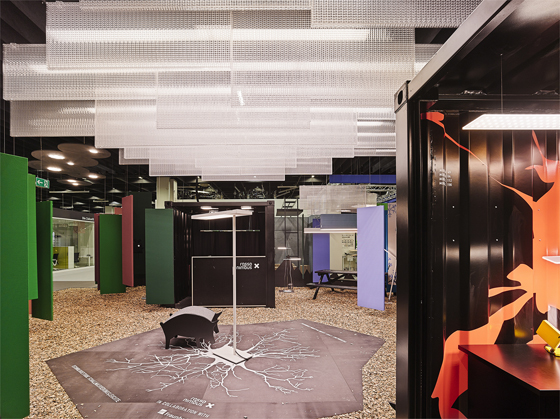
In a large glade in the middle of the Rossoacoustic forest stands a groundbreaking innovation: a sound-masking LED workplace luminaire; photo: Frank Ockert
×I’m very happy that Behnisch Architekten and the client, the Chamber of Commerce, were prepared to make such an early investment in this forward-looking technology and join us in this venture. We learned a great deal in the process – and the result was a breakthrough.’ Another highlight in the Nimbus Group’s Mock-Up space was the presentation in early June 2014 by the award-winning architect Diébédo Francis Kéré, who spoke about his design philosophy and his ecologically sustainable architectural projects in developing countries. This event, like a number before it, was organised in cooperation with the aed, the society for the promotion of architecture, engineering and design in Stuttgart. Mock-Up is thus gradually becoming an established and esteemed address for the area’s architects and designers.
The Nimbus and Rosso brands have begun to coalesce technologically and strategically, as demonstrated recently by an ingenious light-acoustics concept presented at the industry’s leading trade fair, Orgatec, in Cologne. In collaboration with the long-time partner of the Nimbus Group, the Stuttgart-based Fraunhofer Institute for Building Physics (IBP), an innovative, sound-masking LED floor-standing luminaire has been developed that provides focused sound to a workstation.
The new Team tools make zoned workplaces more comfortable and more individual, for example with this tray … Photo: Jens Küsters
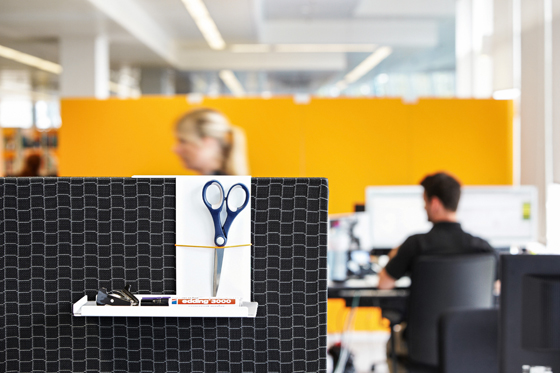
The new Team tools make zoned workplaces more comfortable and more individual, for example with this tray … Photo: Jens Küsters
×A further practical Team tool is the document holder for magazines and files. Photo: Frank Ockert
How exactly does it work? Two different loudspeakers with sound-masking properties are integrated into the head of the luminaire: a conventional speaker mounted on the upper side of the head emits a barely audible background noise, while a parametric ultrasonic loudspeaker integrated into its underside directly fills the workstation with sound to form a personal hearing zone around the user. The volume and signal type of this zone are independently adjustable using a smartphone or a tablet PC, allowing the sound emitted in the space to be kept many times quieter than a masking signal transmitted over an entire open-plan office.
Brennenstuhl: ‘What’s decisive here is that the masking sound can be significantly subtler than those used until now, causing less disturbance to neighbouring colleagues. We’ve designed a luminaire that, for the first time, delivers not only light, but also provides an acoustically more comfortable atmosphere for focused work. Combined with our new Acoustic Pads and Acoustic Stripes, which allow the sound-masking of individual spaces in open-plan offices, this luminaire creates the precondition for a more relaxed and efficient way of working.’


